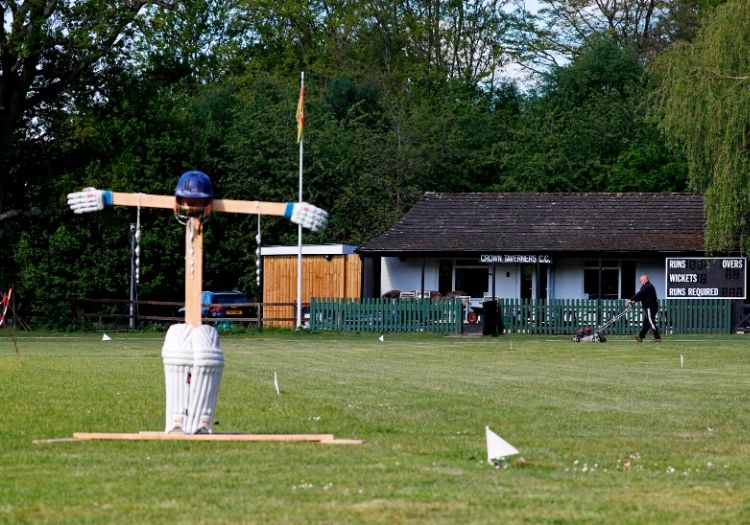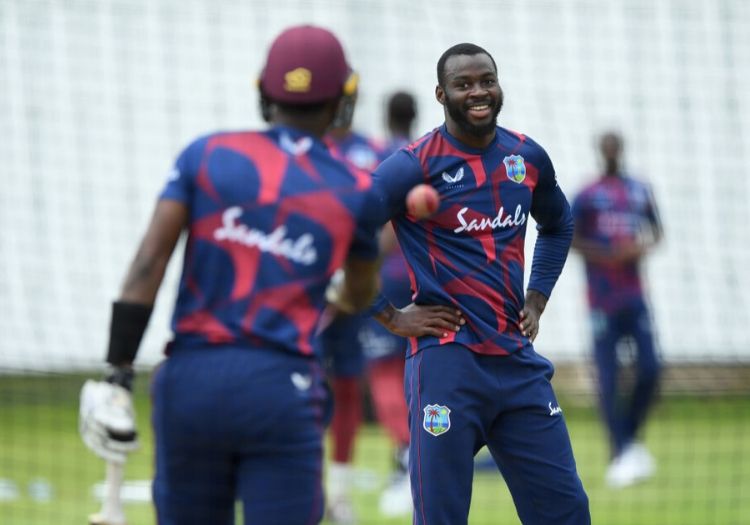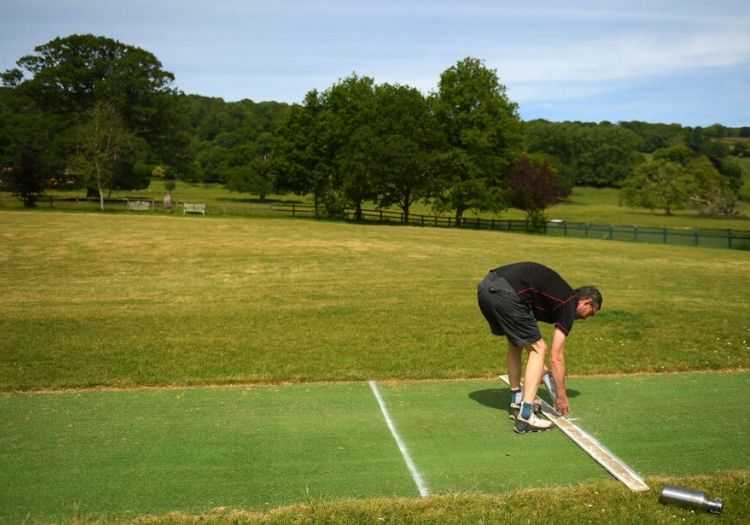SAM MORSHEAD: The game has withstood plenty during the Covid-19 lockdown, and everyone - governing body, county staff, players, club cricketers, volunteers, broadcasters and publishers - has played their part...

One hundred and seventeen days.
One hundred and seventeen days have passed since England’s players walked off the field midway through a warm-up match in Sri Lanka and flew home, as Covid-19 began to wreak tragic havoc across the planet.
Given the scale of this wretched disease’s devastating effect, it seems quite callous to focus on how it has impacted the good game cricket alone. There are, of course, more important issues in the world, which have a much greater bearing on many more lives. But cricket still matters to those of us who love it, and it is with good reason that we can pause today to think of what our sport has had to withstand.
Cricket in the UK - I can’t speak from experience beyond our shores - has relied heavily on a sense of community during these difficult weeks, and community has largely won through.
The ECB, often derided and for good reason, has managed to largely unite a sport. While others have bickered, cricket has been remarkably resolute.
The governing body successfully lobbied for the return of the recreational game, making it the first team sport to be allowed to return to full-sided competition in England post-lockdown, where teams consist of more than two players.
It did so by calling on the knowledge of pillars of the scientific community - pulled together by chief medical advisor Nick Peirce, whose work must not go unacknowledged - and presenting as thorough an explanation of Covid-safe sport as could have been generated in the circumstances. There is no evidence of any substance that No.10’s delay in granting permission to play was based on much more than the staggering of certain activities’ return.

The cricket community in the UK has stood strong during a difficult time
Of course, by the time the prime minister finally accepted that the ball was not a vector for disease (hitherto proven by science), and that cucumber sandwiches would not trigger a second wave, the ECB had already planned from scratch, without prior expertise, three behind-closed-doors series against international opposition: a feat thus far unmatched by any other sporting body worldwide. With Australia likely to visit in September, too, this equates to a financial Hail Mary that could secure hundreds of livelihoods in the months to come.
The importance of the job done by Steve Elworthy and his team in delivering these events cannot be overstated, nor the cooperation of Cricket West Indies and their players, who flew from the relatively safe confines of the Caribbean into a Covid hotspot to get the game on. English cricket owes a debt that must not be forgotten, as it does to Pakistan and the PCB.
In among the pandemonium and relentless stories of lost jobs around the country, 25 women have become professional cricketers for the first time.
It was certainly not as much as was planned - those who were given regional hub retainers last month will earn substantially less than they otherwise might, and 40 new pros was the stated target of the ECB for this year - but that should not overshadow tangible change at the most testing time imaginable.
In the coming days, it is expected that a series involving at least one of South Africa and India will be confirmed for September, too, guaranteeing women’s international cricket on top of the assurance that at least some domestic fare will be played in the miserable summer of 2020. That is a fine achievement, and evidence of genuine commitment to advancing the women’s game.
At a communications level, England Cricket set the bar early and quickly, thanks to the proactivity of Danny Reuben, the senior men’s team’s head of communications.
In a media environment which demands surplus content, Reuben delivered a programme of interviews, information and footage which has ensured the sport remains high on the agenda in national newspapers and online.
That enthusiasm to spread the word about our sport stretched to county level, too, where challenges have been faced on a daily basis, with the vast majority of club staff furloughed and each of the 18 operations left to run on fumes.
Still, however, members’ queries have been met, and websites have been populated, and social media accounts have not been allowed to lay dormant.
READ MORE FROM SAM MORSHEAD
Those left behind to man the controls - from stadium managers planning Covid-secure environments well beyond their job descriptions to marketing executives charged with fielding questions from the press - have stepped up without exception.
It has been a thrill and pleasure to see the counties actively engage in projects The Cricketer has launched - most notably the thoroughly silly Quarantine Cup, and Lockdown Heroes, the results of which will be made available just before the start of the new domestic season.
It is a quirk of the recent horror that communities have found themselves drifting closer - my wife and I have had more conversations with our neighbours in our small block of south London flats since returning from rural isolation than we did in the six months prior - and I certainly feel that the shared experience has only bolstered The Cricketer’s relationship with the 18.
It is with that sense of togetherness in mind that so many counties have opened their grounds to be used as coronavirus testing points, or organised phone calls to elderly members to check on their wellbeing, or raised money for charity - in Warwickshire’s case, via a massive club-wide initiative.
It is with that sense of togetherness that pros have taken it upon themselves to do what they can to spread a little joy: Chris Rushworth’s YouTube coaching for kids, Ravi Bopara’s free chicken for the NHS, Amar Virdi delivering meals to nurses and doctors, and Keaton Jennings making sure academy prospects stayed fit at the height of lockdown.
Members have responded, too, by writing off their annual fees or allowing counties to repackage them and add buoyancy to their accounts. We’ve lived this nightmare together, and that has helped us through.
In the media, the innovation of Sky Sports, and its collaboration with the BBC, gave so many cricket lovers an injection of adrenaline and nostalgia. Those watch-alongs - Headingley and the World Cup final, most notably, but also the reliving of Edgbaston ‘05 - pulled together players, broadcasters and fans to briefly detach us all from reality.

English cricket owes West Indies a debt of gratitude
With freelancers stuck between the rock of not being paid and the hard place of not falling under any government support plan, TriNorth - the owner of Wisden Cricket Monthly - came up with an entirely new digital magazine, The Pinch Hitter, reliant on donations and a pay cut by their staff, to give those who work for themselves a chance to earn.
Its 10 editions generated £10,000 for the freelance community, at a time when there was not one game to cover.
In a notable and rare display of camaraderie between old institutions and new media, both the ICC and Cricket Australia acted quickly to annul copyright violation strikes labelled against Rob Moody’s exceptional bank of archive footage on YouTube, allowing the channel to continue to provide endless hours of entertainment for badgers and geeks across the globe.
At club level, where funds don’t so readily reach, we’ve learnt to depend on each other over time, but this exceptional scenario still caught us by surprise.
Committees which might previously have dealt with nothing more strenuous than a village fete have had to adapt to the restrictions of the coronavirus, and keep their membership informed, all the while establishing just how the financial impact of this annus horribilis will affect the club beyond the final chorus of Auld Lang Syne.
This summer has involved more community action in cricket than any we are likely to experience in our lifetimes.
It has been worrying to see so many crowdfunding pages appear online, and hear the anxieties of clubs whose revenue streams were snapped off in April and may not be fully restored until next year, maybe beyond, perhaps never. The ECB, Sport England and local authority funding, which so far has handed out more than £20million, will help but even that financial support will not prevent the collapse of several clubs this year, and one cricket club lost to Covid-19 is too many.
For those which do survive, there are concerns about essential maintenance being ignored, and juniors lost to the wilderness of this idle early summer.
But, as is a happy trait of club cricket, there have been just as many stories of benevolence, compassion, kindness and innovation: university students running hundreds of kilometres in the name of charity, village cricketers setting up elaborate race nights and Zoom quizzes, coaches providing free sessions online, and radio commentators creating fantasy series with garden furniture and a fervent imagination.
And then, if you’ll spare me a moment of introspection, there is our team at The Cricketer.
The magazine is set to celebrate its 100th birthday in April, and the first thought in our minds back in March was to ensure the centenary party could still take place, albeit in a less glamorous setting than was originally intended.
At 99, the magazine - the pride of Plum Warner and CMJ - had never seen a pandemic, even if it had traversed a World War and several recessions.
It is testament to the loyalty of its readers that we will raise our bat next year, and then turn our minds towards a daddy hundred.

Club cricketers are preparing to return to action
But it is also testament to a small, committed, selfless group - who if unrecognised here might never get the congratulations they deserve.
By my estimation, our editorial team of six has published in the region of 2,000 articles across our platforms in the time since the last recognised first-class fixture was played. Huw Turbervill, Simon Hughes and art director Geoff Barton have generated three engaging editions of the magazine, created in front rooms and bedsits from Kent to Birmingham.
Nick Friend has interviewed around a quarter of county pros, and published more than 40 exclusive online features which have told stories you absolutely won’t find elsewhere. Social media editor Owen Riley has curated genuinely engaging feeds which have kept the conversation turning.
I’m incredibly proud to have been a part of this team this awful summer, and proud to be leading them towards the next chapter this morning.
It is only the next chapter, however.
While England’s Test series with West Indies matters a great deal, both in terms of national morale and how administrators plan for similar events in the coming months, it cannot take away from the fact that our sport will need substantive support from top to bottom, as it comes to terms with what has just happened.
Thankfully for cricket, as the past one hundred and seventeen days have shown, we are here for each other.
Save 30% when you subscribe to The Cricketer’s print & digital bundle. £35 for 12 issues